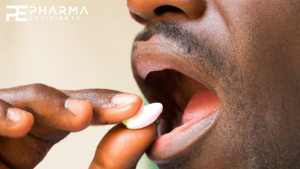Hydrogenated phospholipid, a promising excipient in amorphous solid dispersions of fenofibrate for oral delivery: Preparation and in-vitro biopharmaceutical characterization

Amorphous solid dispersions (ASD) represent a viable formulation strategy to improve dissolution and bioavailability of poorly soluble drugs. Our study aimed to evaluate the feasibility and potential role of hydrogenated phospholipid (HPL) as a matrix material and solubilizing additive for binary (alone) or ternary (in combination with polymers) solid dispersions, using fenofibrate (FEN) as the model drug. FEN, incorporated within ASDs by melting or freeze-drying (up to 20% m/m), stayed amorphous during short-term stability studies. The solubility enhancing potential of HPL depended on the dissolution medium. In terms of enhancing in vitro permeation, solid dispersions with HPL were found equally or slightly more potent as compared to the polymer-based ASD.
For studied ASD, in vitro permeation was found substantially enhanced as compared to a suspension of crystalline FEN and at least equal compared to marketed formulations under comparable conditions (literature data). Additionally, while the permeation of neat FEN and FEN in binary solid dispersions was affected by the dissolution medium (i.e., the “prandial state”), for ternary solid dispersions the permeation was independent of the “prandial state” (FaSSIF = FeSSIF). This suggests that ternary solid dispersions containing both polymer and HPL may represent a viable formulation strategy to mitigate fenofibrate’s food effect.
Download the full article as PDF here Hydrogenated phospholipid, a promising excipient in amorphous solid dispersions of fenofibrate for oral delivery: Preparation and in-vitro biopharmaceutical characterization
or read it here
Materials
The vinylpyrrolidone vinyl acetate copolymer (Kollidon® VA64; VA64) was kindly donated by BASF SE (Ludwigshafen, Germany). Hydrogenated soybean phosphatidylcholine (PHOSPHOLIPON P90H; P90H, containing > 90% hydrogenated soybean phosphatidylcholine) was kindly donated by Lipoid GmbH (Ludwigshafen, Germany). Sodium dodecyl sulfate (SDS) was purchased from Caesar & Loretz GmbH (Hilden, Germany). Fenofibrate (FEN), trifluoracetic acid (TFA), dimethyl sulfoxide (DMSO), sodium hydroxide, sodium phosphate monobasic monohydrate, sodium phosphate dibasic dihydrate were purchased from Sigma-Aldrich ApS (Brøndby, Denmark). Purified water was freshly prepared using a Milli-Q® Advantage A10® integral water purification system (MerckMillipore, Merck A/S, Hellerup, Denmark). Methanol (MeOH) and acetonitrile (ACN) of HPLC-grade, sodium chloride, and tert-butanol were purchased from VWR International A/S (Søborg, Denmark). Acetic acid was purchased from Fluka (Honeywell Inc., Charlotte, US). Reagents used in this study were of the analytical grade unless stated otherwise. Simulated intestinal fluid (SIF) powder was purchased from biorelevant.com (London, UK).
Mikołaj Czajkowski, Ann-Christin Jacobsen, Annette Bauer-Brandl, Martin Brandl, Paulina Skupin-Mrugalska,
Hydrogenated phospholipid, a promising excipient in amorphous solid dispersions of fenofibrate for oral delivery: Preparation and in-vitro biopharmaceutical characterization, International Journal of Pharmaceutics, 2023, 123294, ISSN 0378-5173, https://doi.org/10.1016/j.ijpharm.2023.123294.
Read more on Orally Disintegrating Tablets (ODTs) here:


